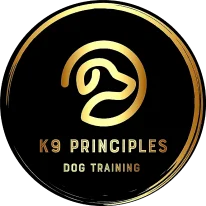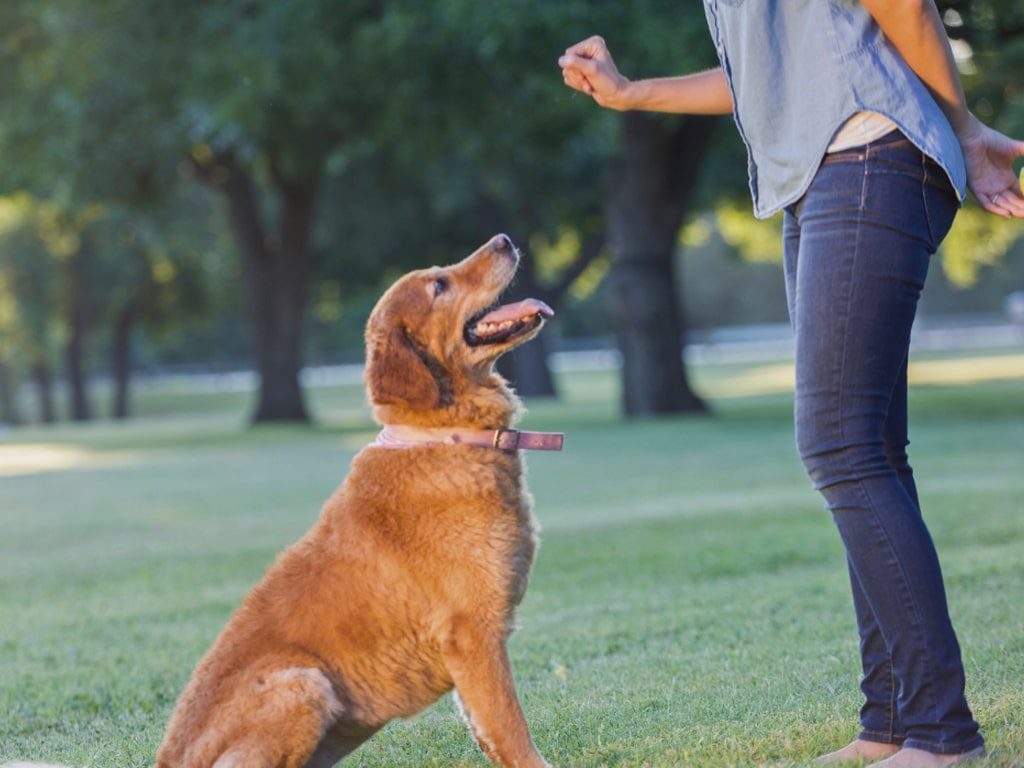Training your dog can be one of the most rewarding experiences, but it can also be daunting, especially if you’re new to dog ownership. How do you teach your dog to follow cues? What kind of rewards work best? And how do you ensure that the training sticks? If you’re looking for an approach that’s not only effective but also fosters a deeper bond with your dog, differential rewards might be the answer. This training method is rooted in positive reinforcement and has proven to be incredibly effective for dog owners in Hamilton dog training. By learning how to use differential rewards, you can transform your training sessions and set your dog up for lifelong success.
What Are Differential Rewards?
 Differential rewards are a nuanced approach to positive reinforcement. Instead of treating every successful behaviour the same, this method varies the type and value of the reward depending on the quality of your dog’s response. For example, if your dog performs a cue perfectly in a challenging environment, they earn a high-value reward—something they absolutely love. If their performance is good but not outstanding, they receive a lower-value reward, such as a piece of kibble or a small pat on the head. The idea is to encourage your dog to always give their best effort by showing them that excellent behaviour results in excellent rewards.
Differential rewards are a nuanced approach to positive reinforcement. Instead of treating every successful behaviour the same, this method varies the type and value of the reward depending on the quality of your dog’s response. For example, if your dog performs a cue perfectly in a challenging environment, they earn a high-value reward—something they absolutely love. If their performance is good but not outstanding, they receive a lower-value reward, such as a piece of kibble or a small pat on the head. The idea is to encourage your dog to always give their best effort by showing them that excellent behaviour results in excellent rewards.
Differential rewards stand in contrast to traditional reward systems, where every success, regardless of effort, is rewarded equally. While consistency is important in training, treating all efforts the same can lead to stagnation in your dog’s learning. With differential rewards, your dog quickly learns to distinguish between “good enough” and “fantastic,” making them more eager to aim for the latter.
The Psychology Behind Differential Rewards
To understand why differential rewards are so effective, it’s essential to consider how dogs learn. Dogs, like humans, are driven by outcomes. If an action results in something they value, they are more likely to repeat that action. This is the foundation of positive reinforcement, but differential rewards take it a step further by introducing a hierarchy of outcomes. When a dog learns that exceptional behaviour leads to exceptional rewards, they are naturally motivated to repeat that behaviour.

This system taps into the concept of variable reinforcement, which keeps the learning process engaging and prevents boredom. Imagine you’re working towards a goal, and the rewards you receive for your effort are sometimes small but occasionally spectacular. The unpredictability keeps you engaged, and the possibility of earning something amazing encourages you to try harder. Dogs experience this same sense of anticipation and excitement when they’re trained with differential rewards.
Another psychological benefit of differential rewards is that it prevents reward fatigue. If your dog always receives the same treat for every action, regardless of effort or difficulty, that treat can lose its motivational power. By varying the rewards, you ensure that training remains exciting and meaningful for your dog.
The Benefits of Using Differential Rewards
Differential rewards offer a range of benefits, making them an invaluable tool for anyone embarking on dog training in Hamilton. One of the most significant advantages is how this method enhances your dog’s engagement. When your dog knows that their effort directly impacts the quality of their reward, they become more focused and motivated during training sessions. This increased engagement makes it easier to teach new behaviours and refine existing ones.
Another benefit is the speed at which dogs learn when trained with differential rewards. By providing clear feedback about what constitutes exceptional behaviour, you make it easier for your dog to understand what you’re asking of them. This clarity can significantly reduce the time it takes to teach new cues or behaviours.
Differential rewards also help to strengthen behaviours over time. When your dog consistently receives high-value rewards for excellent performance, those behaviours become deeply ingrained. This reliability is especially valuable in situations where you need your dog to respond without hesitation, such as during off-lead recall in a busy Hamilton park.
Finally, training with differential rewards fosters a stronger bond between you and your dog. Because this method relies on positive reinforcement, your dog learns to associate you with good things. Over time, this positive association deepens your relationship and builds a foundation of trust and respect.
When to Use Differential Rewards
Differential rewards can be applied to virtually every aspect of dog training, but there are specific situations where they are particularly effective. One such scenario is when you’re teaching a new cue. For example, if you’re introducing your dog to the “stay” cue, you can use high-value rewards to capture their attention and encourage them to put in their best effort.
Another excellent time to use differential rewards is when you’re refining a behaviour that your dog has already learned. Let’s say your dog knows how to sit, but you want to improve their speed or precision. By reserving the highest-value rewards for the best performances, you can encourage your dog to sit faster and more accurately.
Differential rewards are also incredibly useful in environments with distractions. Whether you’re at a busy park or walking through the streets of Hamilton, this method helps you maintain your dog’s focus and reinforce their training even in challenging conditions.
Avoiding Common Pitfalls
While differential rewards are highly effective, they must be used correctly to achieve the best results. One common mistake is overusing high-value rewards. If your dog receives their favourite treat for every behaviour, that treat can lose its value. To avoid this, save high-value rewards for truly exceptional performances or challenging situations.
Inconsistency is another pitfall to watch out for. If you’re not consistent in how you assign rewards, your dog may become confused about what you expect from them. To prevent this, make sure that the value of the reward always matches the quality of the behaviour.
Finally, be mindful not to accidentally reward poor behaviour. For example, if your dog only half-heartedly responds to a cue but still receives a reward, they may learn that minimal effort is acceptable. To keep your training on track, only reward behaviours that meet your criteria.
How to Implement Differential Rewards
If you’re new to differential rewards, the process might seem daunting at first, but it’s relatively straightforward once you understand the basics. The first step is to identify what motivates your dog. For some dogs, this might be food, such as chicken or cheese. For others, it might be a favourite toy or a game of tug. Understanding your dog’s preferences is key to creating an effective reward hierarchy.
Once you’ve identified your dog’s motivators, you can establish a reward hierarchy. This involves ranking rewards from low to high value. Low-value rewards might include kibble or verbal praise, while high-value rewards could be their favourite treats or an exciting game. Having this hierarchy in place allows you to tailor your rewards to the situation and your dog’s effort.
When introducing a new cue, start with high-value rewards to capture your dog’s attention and encourage them to try their best. As your dog becomes more proficient, gradually transition to medium- and low-value rewards for routine performances, reserving the best rewards for exceptional effort.
Consistency is crucial when using differential rewards. Make sure that your dog understands the connection between their effort and the reward they receive. If your dog performs exceptionally, always reward them with something they truly value. Over time, this consistency will reinforce the desired behaviour and make it more reliable.
Practical Examples of Differential Rewards

Differential rewards can be applied to a wide range of training scenarios. Take recall training, for example. If you’re at the park and your dog comes when called despite distractions, such as other dogs or wildlife, they’ve earned a high-value reward. On the other hand, if they take their time or appear hesitant, a lower-value reward may suffice.
Another example is teaching the “stay” cue. When your dog holds the position for a short time, you might reward them with kibble. As they improve and stay for longer periods, you can increase the reward’s value to encourage further progress.
Advanced Techniques with Differential Rewards
Once your dog has mastered the basics, you can use differential rewards to teach more complex behaviours. For example, if you want your dog to fetch an item and bring it to you, you can use this method to break the behaviour into smaller steps and reward progress at each stage. High-value rewards can be used to mark significant milestones, such as when your dog picks up the item for the first time.

The Long-Term Impact of Differential Rewards
The benefits of differential rewards extend far beyond the training session. Dogs trained with this method become more reliable, confident, and attentive. They learn not only to perform specific behaviours but also to understand the value of effort and focus. This foundation makes it easier to teach new skills and adapt to different training challenges.
In the context of Hamilton dog training, differential rewards offer a flexible and effective solution for addressing the unique needs of each dog. Whether you’re working on basic manners or advanced behaviours, this method provides a clear and positive path to success.
Conclusion
Differential rewards are a powerful tool for any dog owner, particularly those new to training. By varying the type and value of rewards based on your dog’s effort, you create a training system that’s both engaging and effective. This method not only accelerates learning but also strengthens the bond between you and your dog, fostering trust and mutual respect.
If you’re embarking on dog training in Hamilton, mastering differential rewards can set you and your dog up for a lifetime of success. With patience, consistency, and an understanding of your dog’s unique needs, you can turn training into a rewarding experience for both of you.
- Name: K9 Principles
- Address: Haldimand County, Greater Hamilton Area, Burlington and Most of Norfolk County
- Phone: 289 880-3382
- Email: k9principlesinc@gmail.com
- Website: www.k9principles.ca
FAQs
-
A.The best rewards depend on your dog’s preferences. High-value rewards might include cooked chicken, cheese, or a favourite toy, while low-value rewards could be kibble or verbal praise.





